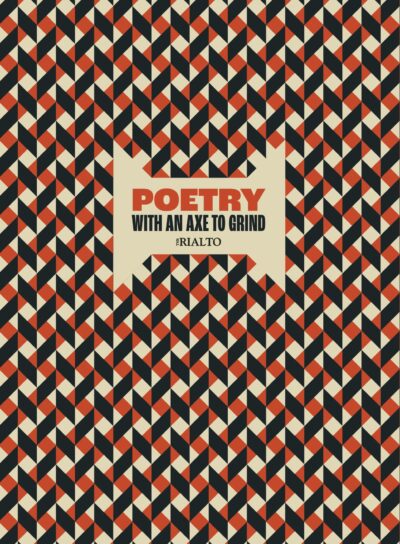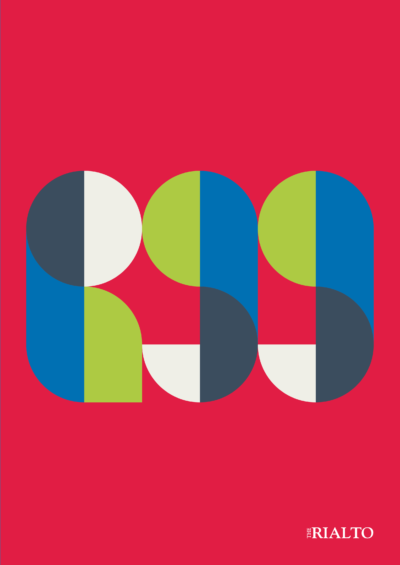I swam in the sea at Dunwich this morning, conscious as ever of the old lost city below me. Looking back at the tufted crumbling cliffs and then facing out to the hazy horizon, where the grey-gold water met the blue-grey sky, I thought about this recurring dream I have that I am trying and failing to get to the ocean. And I wondered if what this is about – apart from being about wanting to get to the sea, because it is so nice – is trying to get to poems.
This morning the sea was warm, gentle and receiving, and I floated long enough for something to click and resonate, my ears under the water so I could hear the sounds the sea was making to itself, under the surface. A kind of chewing tinkling; rather private-sounding. Being in the water reminded me of poems, and how they often seem to swim just beyond my reach unless I make a really conscious effort to pull them in to my hands; they bob alongside me but often float away, as if easily scared off.
I suppose our relationship with water is so deep – it being our emotions, our unconscious, half of our bodies, most of our blood, everywhere, etc – that it can be a very mutable metaphor for all sorts of things. I know that I write about it a lot; I have long been writing a book about the Florida Keys, where, living there, you more or less float as blips on the ocean. And I know that I feel best when I’m by – or preferably in – a river or a sea, letting the water carry things, and knock at the walls of my skin.
At the end of last year, I got the chance to think about water as my work when I was commissioned to write about two rivers and their valleys: the Waveney, which winds from Redgrave, south of Diss, to Lowestoft and Yarmouth; and the Blyth, which runs from Laxfield, Suffolk, out to the sea between Southwold and Walberswick. Both are modest East Anglian rivers; the writer Richard Mabey (who is participating in the project) told me that since they flow over so much common ground, they are unclaimed and quite overlooked; have been left to their own devices over the years. This felt like a helpful thing.
The writing was for a libretto for a new choral work by the composer Karen Wimhurst, whose work I knew and liked from her choral setting of Emily Dickinson poems, A Letter to the World.
I was a bit tentative. To be commissioned to write about some rivers and areas that I’ve known and loved since childhood: how exciting. To have to write words that work, and that Karen Wimhurst could use, and that a new choir made up of lots of community choirs could sing: how daunting. And to have to catch poems, which might not want to come: that was the scariest bit.
I was writing to order, so something had to come: at least ten different somethings, as that was how many pieces Karen wanted to compose. And I had to do justice to the two rivers, their valleys, their people, their journeys to the 21st century; probably to the world in general, because that’s how it works. And I had to be coherent. And it had to be preferably metrical and definitely simple – and penetrable: keep it impressionistic, Sian Croose the choir-leader (who runs Norwich’s Big Sky choir) told me. Don’t try and do irony, or cynicism, or too much detail. It won’t translate. It’s a choir. They do immediate images. They do collective sincerity, and universal proclamations.
I had to translate whatever the rivers might say to me, assuming that they did say something. What would I hear, notice, filter, miss? In the early days of pacing around – across the marshes behind Blythburgh Church, or where the Waveney emerges, in a burble of copper water closely guarded by reeds – I felt a strange kind of responsibility. I was making money from the rivers, and speaking for them, and I couldn’t get their permission (although I sort of tried to); they do not hold a copyright on themselves. Like the Glastonbury Tor, appropriated by Danny Boyle for the Olympics opening ceremony, they are common currency; open to all sorts of clumsy misrepresentation.
And it’s been done before, of course, most incredibly in recent years by Alice Oswald in Dart. I had to forget about that. And technically it was new, and challenging: “I’ve had trouble with writers,” Karen told me in our first conversation: “they can get terribly attached to their words.” She and I agreed from the start that I would lob verses of words at her and she’d see what worked, discard what didn’t, ask for more like this or less like that. I had to be very, very conscious of the rhythm, and of rhymes that could help with pace. I had to be fluid, unattached, ready with new directions or versions, up for a lot of drafts – and even when Karen and I were happy, there was always the possibility that Sian would need to make further changes as she taught it to her choir.
I had to get inside the landscape, obviously. This isn’t something I am usually self-conscious about, writing of nature as I seem to do a lot these days – but the commission gave me performance anxiety.
Also, other people had ideas of what should or could be squeezed in: could I, people suggested, incorporate something about the Waveney Canoeists? The story of local migrants? The ancient Danish town of Harleston? Anglers? The famous Miss Ellis, of the Geldeston Locks Inn? The effects of climate change, actual and possible? The story of the water gypsies, of the old ferry system? Could I, I was asked, make it quite obvious in the poems which stretch of the river I was writing about?
At this point I was given a very good piece of advice by a writer friend who had experience of being commissioned. “Forget ‘em,” he said. (He swore, actually.) “Do what you want. Just make sure you walk in the landscape a lot.”
I tried not to be too magpie-like with the facts I gathered. But I was magpie-like, despite myself; because I couldn’t resist researching local history, myth, geology and so on, I ended up like the person trying to fill a teacup from the Niagara Falls – overflowing and deluged with material.
The thing is, there’s always so much that’s interesting. My eye kept being caught by details poetical-historical: the ice floes that were towed from Norway to Lowestoft to keep the herrings fresh when the industry was at its height; the eighth century whalebone writing tablet that was excavated at Blythburgh in 1900; the draining of the land around St Olaves by Dutch technicians; the remains of a Neolithic causeway at Barsham. Anything could be useful, from the contents of a parish notice board near Bungay to the legend of Shuck, the black hound of Odin and phantom dog of Suffolk.
So in fishing for poems, I became a consumer, bags full of facts and notions and possibilities which I dragged around with me, every single thing feeling like it could be useful, or be poetry. ( There’s a word for this I think, but I can’t remember what it is.) I walked along riverbanks, head full of INFORMATION like heavy shopping, which I slowly jettisoned, luckily; or which got absorbed until it was a probably more or less invisible part of the fabric of what I wrote. There in spirit. It was the framework which gave me the courage to go off at a tangent; a solid box which I could then fill with my own padding. Paddling through the facts, with the wider frame of the landscape holding me, I started to trust what I was doing.
In the end, the real way in seemed to be through the building blocks of the valleys, its significant substances: hemp, clay and reed; heath, fen and sandling. Keep it simple, I thought..
I walked in the riverscape and often enough, like a minnow flips in to a pail, lines would come. Or words would come out often after the fact – like water held in the ear after a submersion. They were delicate threads from a huge overwhelming tapestry; one sum out of a multitude of calculations, But valid.
I ended up with ten bodies of words, which between us Karen and I whittled and tightened. She uses a lot of repetition in her work, so we stripped the words back and back. In the process, as she asked for tighter and tighter lines, I got a very hands-on lesson about meter and rhythm.
Here is one early draft:
We are in our skin
watertight and upright,
fastening in to gravity
in broad daylight.
Huge beside the seaweed
tiny by the forest.
We are in our skin
and the land beyond the dunes is green.
We take the slopes at a run –
the land is a rune waiting
to be read, and its lines
are our pauses.
We are in our skin
watertight and upright
singing the song of ourselves
in broad daylight.
Flowing across the bay,
breathing with the waves.
How did it end up? You can hear it next month.
A few times, it would happen that I emailed Karen my words in the afternoon and the next morning they’d be waiting for me in my in-box as sound-files, turned into songs she had sketched out with her voice and a piano. When Karen wove the words into music, a third thing, of course, emerged, and this was exciting, rather awe-inspiring; an experience which I would recommend to any writer. I could stand back from my part in it and hear a voice sing the words back across the riverscape from where they arose: across the mud, sand and clay; the flint, pigs, sedge and reeds.
It was working, and the collaboration meant that I was only part of the process – we shared the responsibility. A good thing.
The other benefit was that I experienced, as I have before, the mysterious effect of pressure: it seems like when you absolutely have to write poems, poems come. You stomp about and they rise up, brought to the surface like night-crawlers. Pressure is good. pressure is like bait.
I don’t know if poems are always there, the bare bones of them at least, waiting for anyone to find. Sometimes it’s like dredging up old bones, or bodies preserved in peat. Sometimes, there’s the feeling where they’re swimming beside me and I swing out and catch them thread by thread. Sometimes I don’t catch them at all.
Writing Translated by Reeds (which is what it’s called), I realised that words I’ve been scribbling over the years – on Walberswick Beach in a May bank holiday squall; in the Bishop’s Room in the tower of Blythburgh Church; sitting on the earth of Redgrave Fen on a July morning, beside the sedge and the common vetch – were preparing for this. Some of the words got woven in, and some, like the more conscious research I did, just informed what knowing I had, little threads, rivulets feeding in to the rivers. Our rivers, which feed into our seas.
- Translated by Reeds, an evening of specially commissioned words and music capturing the spirit of the rivers and landscape of the Waveney and Blyth, will be performed in September. It will feature a new Waveney and Blyth choir, led by Sian Croose and featuring Karen Wimhurst, Sianed Jones and Rebecca Askew as soloists. In the first half, the highly acclaimed writer and naturalist Richard Mabey, Honorary President of Waveney and Blyth Arts, will unveil his Cabinet of Curiosities. gathered over many years of exploring and living in this landscape, in a talk unique to each venue.
Performances:
Saturday 15 September 7.30pm, The Cut Arts Centre, Halesworth.. Box Office: 0845 673 2123
Friday 21 September 8.00pm, Diss Corn Hall. Box Office: 01379 652241
Saturday 22 September 7.30pm, St Nicholas Minster, Great Yarmouth. Box office: 01379 855 235
www.waveneyandblytharts.com





